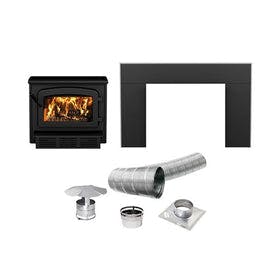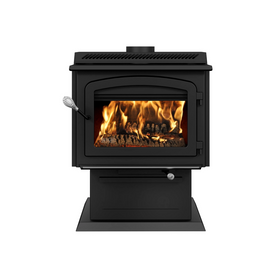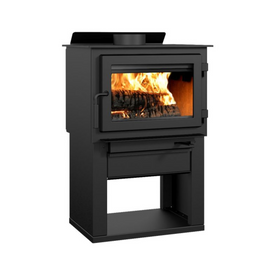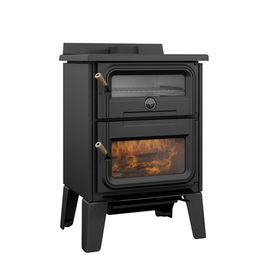
Tips to Protect Your Home From Wildfires
Last Updated: Apr 9, 2025In 2020, wildfires across the United States burned more than ever before - they consumed over 10 million acres of land. Wildfires can affect all different landscapes; dry crop fields are affected by drought and virgin forests in the mountains. Even suburban areas where million-dollar homes went up in flames. While statistics are not yet complete for the current year, it often seems like almost the entire western part of the country is on fire. As global warming leads to higher temperatures while also affecting rainfall patterns and soil humidity, intense wildfires will, unfortunately, be likely in the coming years.
Table of Contents
- Can You Fireproof Your Yard?
- What Can You Do To Reduce Roof Flammability?
- What Are Home Siding Flammability Considerations?
- Can Windows and Doors Help With Fire Resistance?
- How Can You Protect Roof Vents From Fire?

The best thing any homeowner can do to protect their family from a wildfire is to stay informed. The Geospatial Multiagency Coordination is a government agency that maintains a real-time map of current fires across the US. Natural Resources Canada maps the level of fire risk and recent fire burning across the country. Periodically checking that map is an important step to keep your family protected. There are several things to help prepare before evacuation is necessary to keep your home protected from the devastating effects of wildfires. Here are some suggestions about how you can sustainably fireproof your home.

Can You Fireproof Your Yard?
Wildfires thrive in dry and arid conditions. If your yard is brown and dried during much of the summer and fall months, your home will invariably be at a higher risk for damage by fire. Even a small, careless spark, such as a cigarette flicked into your yard by a passing car, can lead to severe wildfires.
At the same time, wasting large amounts of household water on spraying your yard is not the most sustainable practice. It might be illegal in several parts of the country, where lawn irrigation bans are in effect. Opt for innovative irrigation practices and technologies that radically reduce the amount of water needed. Keeping your yard green and moist is one option for homeowners worried about fires.
If you live in a fire-prone or drought-prone area, you should not plant conifers such as pine or cedar trees near your home. These trees have highly flammable sap, and the dried needles of pines and cedars can quickly catch fire. At the very least, you should always trim the bottom branches of these species of trees so that they are a minimum of three feet off the ground. This preventative measure will keep any ground-level fire from reaching the bottom branches.
Consider planting other fire-resistant species around your home. These include Eastern Redbud, Live Oak, Sycamore, Yucca, Agave, Salvias, and Lavender. Many of these species naturally thrive in dry areas, which are also the most fire-prone. Do all you can to help water infiltrate into the soil of your yard through the appropriate stormwater management. Even a straightforward bioswale will drastically increase the amount of water in your soil, and the moister your yard, the less vulnerable to fire it will be.

What Can You Do To Reduce Roof Flammability?
When a wildfire is raging near your home, many fire departments recommend spraying your roof with water. This spraying will help to avoid sparks and ash from leading to further damage. Of course, this mostly applies to shingle and cedar slate roofs. Roofs made from metal or terra cotta tile are naturally fire-resistant. If you live in a fire-prone area, it might be a good idea to opt for a sustainable and fireproof roofing option - for example, metal, green or living roofs, or terra cotta tiles.

What Are Home Siding Flammability Considerations?
Similarly, if the exterior cladding on your home is wood or another flammable material, your home will be more vulnerable to damage from wildfires. If you love the look of your natural cedar siding, make sure to build a brick or rock stem wall several feet up from the base of your home. This wall will keep your wood siding well distanced from the ground, where flames will be more prevalent and intense in the event of a fire.
You could also choose to add fire-retardant paint or varnish to exterior siding that is vulnerable to fire. Fire Free is one company offering fire retardant paints that can contribute to LEED points under the LEED v4 rating systems. For a more natural option, add a fair amount of sand to the paint or varnish you put on the exterior of your home. It will also add some fire retardant properties while also offering a unique texture.

Can Windows and Doors Help With Fire Resistance?
Even for homes with metal roofs and brick siding, windows can be the weak link in protecting your home against wildfires. Intense heat from the outside will most likely shatter single pane glass. Double glazed glass windows with tempered glass on the exterior will increase your home's energy efficiency and thermal performance. But it will also be much more resistant to the heat of a fire raging outside (and three or four panes are even better).
You could also opt for roll-down metal window coverings that can withstand several hours of the most intense heat. Alpine Doors offers metal window shutters that automatically release during a fire event by melting a fusible link.
While you could also opt for metal door shutters, it might make more sense to opt for a metal door. While solid wood doors will most likely withstand heavy flames for up to 20 minutes, a metal door will ultimately be fireproof. If you do not like the look of metal, you can face the door with any other material. This material includes a thin layer of wood that would burn away without affecting the rest of your home.
Fireplaces & Stoves
Find a wide variety of researched and vetted wood stoves products that help address heating and home comfort.

Drolet Escape 1800-I Wood Stove Insert Trio (25ft) DB03127K
Drolet
Out of Stock

Drolet HT-3000 Wood Burning Stove DB07300
Drolet
Out of Stock

Drolet Escape 1500-I Wood Insert Trio (25 FT) DB03137K
Drolet
Out of Stock

Drolet Escape 1800-I Wood Insert DB03125
Drolet
In Stock

Drolet Deco II Wood Stove DB03205
Drolet
In Stock

Drolet Escape 1800-I Wood Insert Trio (35 FT) DB03128K
Drolet
Out of Stock

Drolet Bistro Wood Burning Cookstove DB04815
Drolet
In Stock

Drolet Escape 1500-I Wood Insert Trio (35 FT) DB03137K3
Drolet
Out of Stock

Drolet Deco Nano Wood Burning Stove DB03215
Drolet
Out of Stock

Drolet Columbia II Wood Burning Stove DB03016
Drolet
Out of Stock

How Can You Protect Roof Vents From Fire?
A tiny ember blown by a firestorm into your attic vent could ignite the insulation in your home and quickly lead to a whole house fire. Care needs to be taken to protect all of the holes that could bring fire into your home. Fire dampers with fusible links (like those with the window guards) are a great option. Metal wire screens that are at least 1/8th of an inch will also help stop larger embers and ash from being sucked into your home.

Around 4.5 million homes in the United States are at a high or extreme risk of suffering significant damage from wildfire. The simple strategies listed above will go a long way to help minimize the vulnerability of your home to the growing threat of wildfires.
Tobias Roberts
Tobias runs an agroecology farm and a natural building collective in the mountains of El Salvador. He specializes in earthen construction methods and uses permaculture design methods to integrate structures into the sustainability of the landscape.
